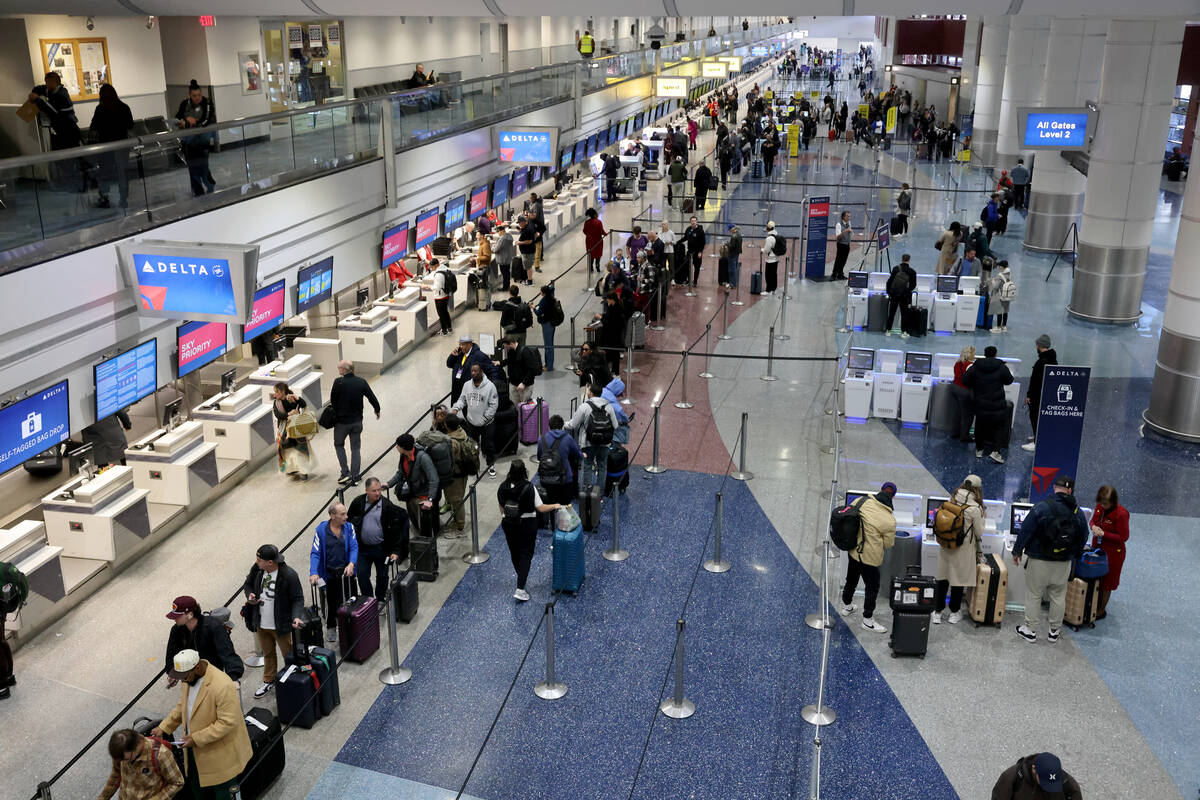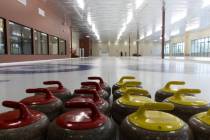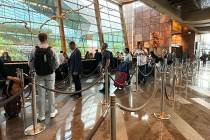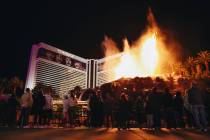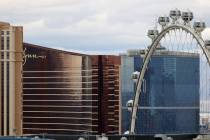Super Bowl success highlights Las Vegas’ transportation shortcomings
Every indication says Super Bowl 58 in Las Vegas was a massive success.
The economic and marketing success of the Super Bowl has prompted many to speculate about when the city would host another one. But it also served as a wake-up call to at least one of the city’s biggest shortcomings.
Based on NFL Commissioner Roger Goodell’s comments during the handoff ceremony to New Orleans — which was supposed to be the site of this year’s game but didn’t because it ran up too close to Mardi Gras — it seems a sure thing that Las Vegas would host another.
Goodell refrained from using terminology about Las Vegas being in a Super Bowl “rotation” since the NFL awards sites after bidding and careful consideration. But based on discussion at last week’s Las Vegas Convention and Visitors Authority board meeting, the city is ready to step up to be a repeat host. The LVCVA has noted that Las Vegas is the first city to have hosted all three NFL premiere events – the NFL Draft, the Pro Bowl and, now, the Super Bowl.
While there has been talk about Las Vegas hosting the game regularly — former tight end Rob Gronkowski remarked that it should be in Las Vegas every year — it would seem likely that the city would take its place with New Orleans, Miami, Tampa, Phoenix and Los Angeles as an appropriate host primarily among warm-weather locations.
Capable host
Now that the city has proven itself a more-than-capable host, some attention has turned to how to improve Las Vegas.
Infrastructure improvements are at the top of that discussion and some of the needs on the horizon should address making the city’s next Super Bowl better.
It’s possible that some of the city’s transportation shortcomings may be addressed and, if they are, they’ll help out on convention traffic and leisure visitation as well as monster events like Super Bowl, Formula One and whatever other big-time sporting events come our way.
By the next Super Bowl, Interstate 15, our lifeline to Southern California, should be much improved. The Nevada Department of Transportation did everyone a favor by holding off on “Dropicana 2” until after the Super Bowl.
There’s still work to be done on the I-15 bottlenecks south of Las Vegas where traffic routinely clogs the route to Southern California. Leaders are continually pushing for highway widening and improvements south of the Nevada border where most of the snags occur. Likewise, improvements to the eventual Interstate 11, north and south, could make access to Las Vegas better.
Within the city, progress is being made on the Boring Co.’s underground transit system which, when completed, is expected to get people around efficiently.
Steve Hill, president and CEO of the LVCVA, last week said Boring Co. has acquired nearly an acre and a half near the Thomas &Mack Center and is preparing to drill tunnels in the south end of the city for its underground loop system.
“They have right now Prufrock One and Prufrock Two (Boring’s drilling machines) nose down and ready to start working with Clark County to finalize building permits, which we think will come very soon,” Hill told LVCVA’s board.
He also indicated tunnels are complete and nearly ready for service at Wynn Las Vegas and Westgate.
More hotel rooms
The next time the Super Bowl comes to town there probably will be at least two new resorts open, Tilman Fertitta’s planned Strip resort and the Oak View Group’s property with its NBA-ready arena farther south. There are others in the planning process, so new hotel rooms on the horizon could push room capacity to more than 160,000.
Possibly the most significant infrastructure addition for Southern Nevada would be the completion of a high-speed train linking Southern California with Las Vegas with a station roughly 3½ miles away from the stadium.
Brightline, which is building the train system, has begun preliminary work on the project and hopes to break ground later this year with an anticipated completion in time for the 2028 Olympic Games in Los Angeles. One would think the next Las Vegas Super Bowl would occur sometime around 2028.
That leads to the city’s biggest infrastructure challenge — the airport.
During Super Bowl 58, thousands of people flew commercially to Harry Reid International as well as hundreds of private jets with their wealthy owners to take in the game. Reid has been in the news in recent weeks with record commercial passenger counts. Arrivals and departures at Reid were at the highest level in its history in 2023 and experts told the LVCVA last week that capacity is continuing to grow.
Dan Bubb, an associate professor-in-residence for UNLV’s Honors College and a former airline pilot, said the Super Bowl and Formula One three months before it provided a wake-up call that something has to be done about bringing people to Las Vegas by plane.
Good job by TSA
The Transportation Security Administration did a magnificent job of processing passengers through security checkpoints, thanks to the TSA importing dozens of agents from other airports during Super Bowl week. A record number of passengers were screened Monday, the day after the game.
Bubb noted that fans in private planes — the ones who pay the big bucks for hotel rooms and game tickets that generate tax dollars that pay for everything from education to public services — parked aircraft in Phoenix and Kingman, Arizona, St. George, Utah, and even Los Angeles because there wasn’t enough room at Southern Nevada’s secondary airports.
Reid International simply is outgrowing Las Vegas.
The obvious solution is the plan to build a reliever airport south of Las Vegas in the Ivanpah Valley between Jean and Primm. The Clark County Department of Aviation is working on environmental approvals for the land where the airport is planned.
Because federal government agencies are involved and there was a pause in planning the Ivanpah Valley airport during the COVID-19 pandemic, getting an airport built and functioning is woefully behind. Last year, airport planners said it isn’t likely a new airport could be open until 2037, well past when Reid International hits its capacity of around 65 million passengers.
Bubb suggests the obvious: Government officials need to fast-track the new airport in order for Las Vegas to continue to host prominent sporting events like the Super Bowl.
In an interview, he took it one step further: Plans need to be made right away to tie in the high-speed rail line to the planned airport. Connecting the city to the new airport by train should provide additional business to Brightline and is essential to Las Vegas staying on track to accommodate big events.
Contact Richard N. Velotta at rvelotta@reviewjournal.com or 702-477-3893. Follow @RickVelotta on X.



